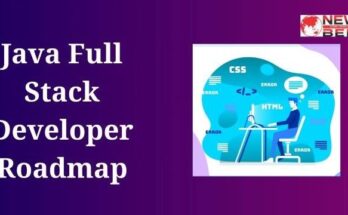1. Amazon Elastic Compute Cloud (EC2)
Amazon EC2 provides scalable computing capacity in the AWS cloud, allowing users to run and manage server instances with a variety of configurations of CPUs, memory, storage, and networking capacity for various applications. EC2 makes web-scale cloud computing easier for developers, offering tools to build failure resilient applications and isolate them from common failure scenarios.
2. Amazon Simple Storage Service (S3)
Amazon S3 is an object storage service offering industry-leading scalability, data availability, security, and performance. It allows users to store and protect any amount of data for a range of use cases, such as websites, mobile applications, backup and restore, archive, enterprise applications, IoT devices, and big data analytics. S3 provides easy-to-use management features so you can organize your data and configure finely-tuned access controls.
3. Amazon Virtual Private Cloud (VPC)
Amazon VPC lets you provision a logically isolated section of the AWS cloud where you can launch AWS resources in a virtual network that you define. You have complete control over your virtual networking environment, including selection of your own IP address range, creation of subnets, and configuration of route tables and network gateways.
4. AWS Lambda
AWS Lambda is a serverless compute service that lets you run code without provisioning or managing servers, creating workload-aware cluster scaling logic, maintaining event integrations, or managing runtimes. With Lambda, you can run code for virtually any type of application or backend service with zero administration. Just upload your code, and Lambda takes care of everything required to run and scale your code with high availability.
5. Amazon Relational Database Service (RDS)
Amazon RDS makes it easy to set up, operate, and scale a relational database in the cloud. It provides cost-efficient and resizable capacity while automating time-consuming administration tasks such as hardware provisioning, database setup, patching, and backups. It frees you to focus on your applications by managing time-consuming database administration tasks.
6. AWS Identity and Access Management (IAM)
AWS IAM allows you to manage access to AWS services and resources securely. Using IAM, you can create and manage AWS users and groups and use permissions to allow and deny their access to AWS resources. IAM makes it easy to provide multiple users secure and controlled access to your AWS resources.
7. Amazon CloudFront
Amazon CloudFront is a fast content delivery network (CDN) service. That securely delivers data, videos, applications, and APIs to customers globally with low latency, high transfer speeds. All within a developer-friendly environment. CloudFront is integrated with AWS – both physically close to your AWS infrastructure and programmatically integrated with AWS services.
8. Amazon DynamoDB
Amazon DynamoDB is a key-value and document database that delivers single-digit millisecond performance at any scale. It’s a fully managed, multi-region, durable database with built-in security, backup and restore, and in-memory caching for internet-scale applications. DynamoDB can handle more than 10 trillion requests per day and can support peaks of more than 20 million requests per second.
9. AWS Elastic Beanstalk
AWS Elastic Beanstalk is an easy-to-use service for deploying and scaling web applications and services developed with Java, .NET, PHP, Node.js, Python, Ruby, Go, and Docker on familiar servers such as Apache, Nginx, Passenger, and IIS. You simply upload your code, and Elastic Beanstalk automatically handles the deployment, from capacity provisioning, load balancing, and auto-scaling to application health monitoring.
10. AWS CloudFormation
AWS CloudFormation provides a common language for you to describe and provision all the infrastructure resources in your cloud environment. CloudFormation allows you to use a simple text file to model and provision, in an automated and secure manner, all the resources needed for your applications across all regions and accounts. This file serves as the single source of truth for your cloud environment.
You May Also Read:
What is Digital Marketing in Hindi
What is Digital Marketing
Types of Keywords in SEO
What is Google Search Console
SEO Interview Questions and Answers
What is Technical SEO
What is Affiliate Marketing Meaning
Google Search Console Interview Questions And Answers
Integrating AWS Components for Solutions
The power of AWS lies not just in the individual services. But in how they can be integrated to create sophisticated and scalable solutions. For example, an application can be hosted on EC2 instances within a VPC for security. Store its data in S3 and DynamoDB depending on the nature of the data (object or NoSQL), and use RDS for relational database needs. IAM can manage access to these resources, while CloudFront delivers the application’s content globally with low latency. AWS Lambda can be used to run backend processes in response to events. Such as changes in data within S3 buckets, without provisioning servers. Elastic Beanstalk and CloudFormation provide higher-level abstraction for deploying applications and managing infrastructure as code, respectively, simplifying the management and scaling of applications and resources.
Conclusion
AWS provides a comprehensive and evolving cloud computing platform that offers a mix of infrastructure as a service (IaaS). Platform as a service (PaaS), and packaged software as a service (SaaS) offerings. The key components of AWS discussed provide the foundation upon which complex applications can be built, scaled, and maintained across a global infrastructure. Understanding these components and how they can be effectively integrated is crucial for architects, developers, and administrators looking to leverage AWS to its full potential.
The capabilities of AWS extend far beyond these foundational services. Encompassing machine learning, artificial intelligence, Internet of Things (IoT), and much more. All designed to provide the tools necessary to bring new solutions to life. AWS’s commitment to innovation, security, and scalability continues to support the diverse needs of businesses and developers around the world. Driving forward the possibilities of cloud computing.




